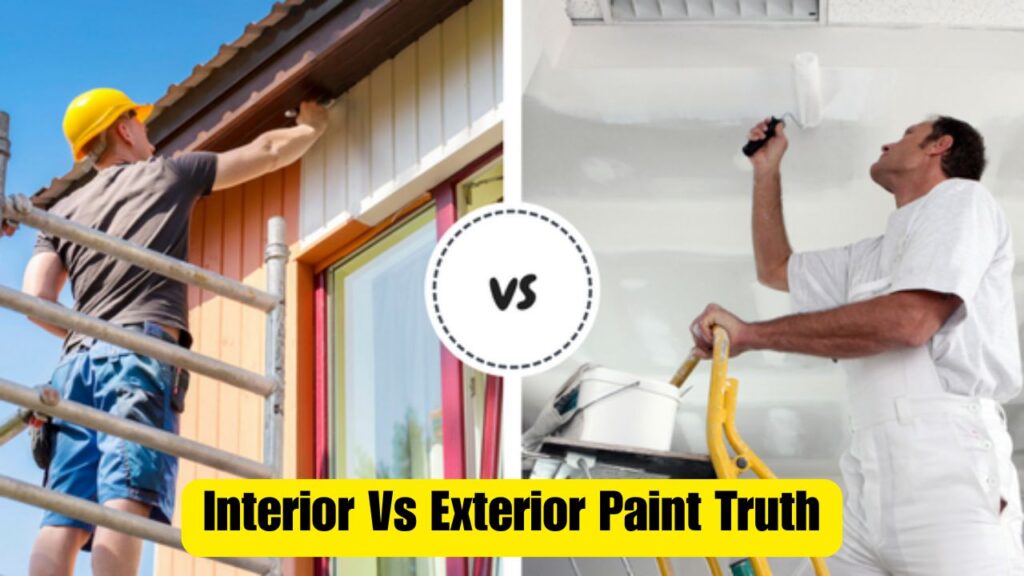Interior vs Exterior Painting – Painting your home is one of the most effective ways to refresh its look and protect it from the elements. However, many Australian homeowners often overlook the differences between interior and exterior painting. Each type requires specific materials, techniques, and maintenance practices suited to the unique climate conditions of Australia. Whether you’re repainting your living room or giving your exterior walls a weatherproof finish, understanding these distinctions can save time, money, and effort. Let’s explore what every homeowner in Australia should know before starting their next painting project.

Understanding Interior Painting for Australian Homes
Interior painting focuses on enhancing beauty, comfort, and indoor durability. Australian homes typically use water-based paints like acrylic or latex for interior walls since they dry quickly and emit low odour. The colour palette often complements the country’s bright natural light — with whites, neutrals, and soft greys being popular choices. Preparation is key: surfaces must be cleaned, patched, and primed before applying the topcoat. Homeowners across Australia should also consider washable or stain-resistant finishes, especially in high-traffic areas such as kitchens and hallways. Investing in high-quality interior paints ensures long-lasting coverage and minimal maintenance.
Exterior Painting Tips for Australian Homeowners
Exterior painting in Australia requires more than aesthetic consideration — it’s about protection from harsh sun, wind, and rain. Premium exterior paints are formulated with UV blockers and weather-resistant resins to withstand Australia’s extreme climate variations. Homeowners should choose paints designed specifically for outdoor use, as they prevent fading, cracking, and peeling over time. Preparation includes cleaning surfaces, removing flaking paint, and applying primer for better adhesion. It’s also wise to paint during mild weather conditions to allow proper curing. Selecting durable, weatherproof paints ensures your home remains attractive and shielded against environmental damage.
| Aspect | Interior Painting | Exterior Painting |
|---|---|---|
| Paint Type | Water-based acrylic or latex | Weather-resistant acrylic or oil-based |
| Finish Options | Matte, Satin, or Gloss | Semi-gloss or High Gloss |
| Primary Purpose | Aesthetic and easy cleaning | Protection from weather elements |
| Durability | Moderate (low wear areas) | High (UV and moisture resistant) |
| Maintenance | Occasional retouching | Repainting every 5–10 years |
Choosing the Right Paint Type for Australian Conditions
When selecting paints for your home, Australian climate conditions should guide your decision. Coastal homeowners should opt for paints that resist salt corrosion and humidity, while inland regions may need UV-stable options to prevent colour fading. For interiors, low-VOC paints enhance air quality, making them perfect for families with children or pets. Always check paint labels for terms like “UV-resistant,” “mildew-resistant,” or “washable finish.” Combining professional advice with climate-appropriate choices ensures both aesthetic appeal and long-term protection for your property in Australia.
Professional Painting Services Across Australia
Hiring licensed painters across Australia can make all the difference between a temporary facelift and a long-lasting transformation. Professionals have access to commercial-grade paints, modern tools, and industry techniques to achieve a flawless finish. They can also advise on colour psychology, surface preparation, and the best paint brands suited for your location. While DIY painting may seem cost-effective, professional painters save time and reduce the risk of costly mistakes, ensuring your home’s value and beauty are well maintained.
Frequently Asked Questions (FAQs)
1. How often should I repaint my home in Australia?
Interior walls usually need repainting every 5–7 years, while exteriors last around 8–10 years depending on weather exposure.
2. What paint finish is best for Australian interiors?
Satin and semi-gloss finishes work best as they resist stains and can be easily cleaned in Australian homes.
3. Is it necessary to use primer before painting exteriors?
Yes, primer improves paint adhesion and prevents peeling, especially under harsh Australian sunlight.
4. Can I paint during any season in Australia?
It’s best to paint in spring or autumn when temperatures are mild and humidity levels are stable for proper drying.




